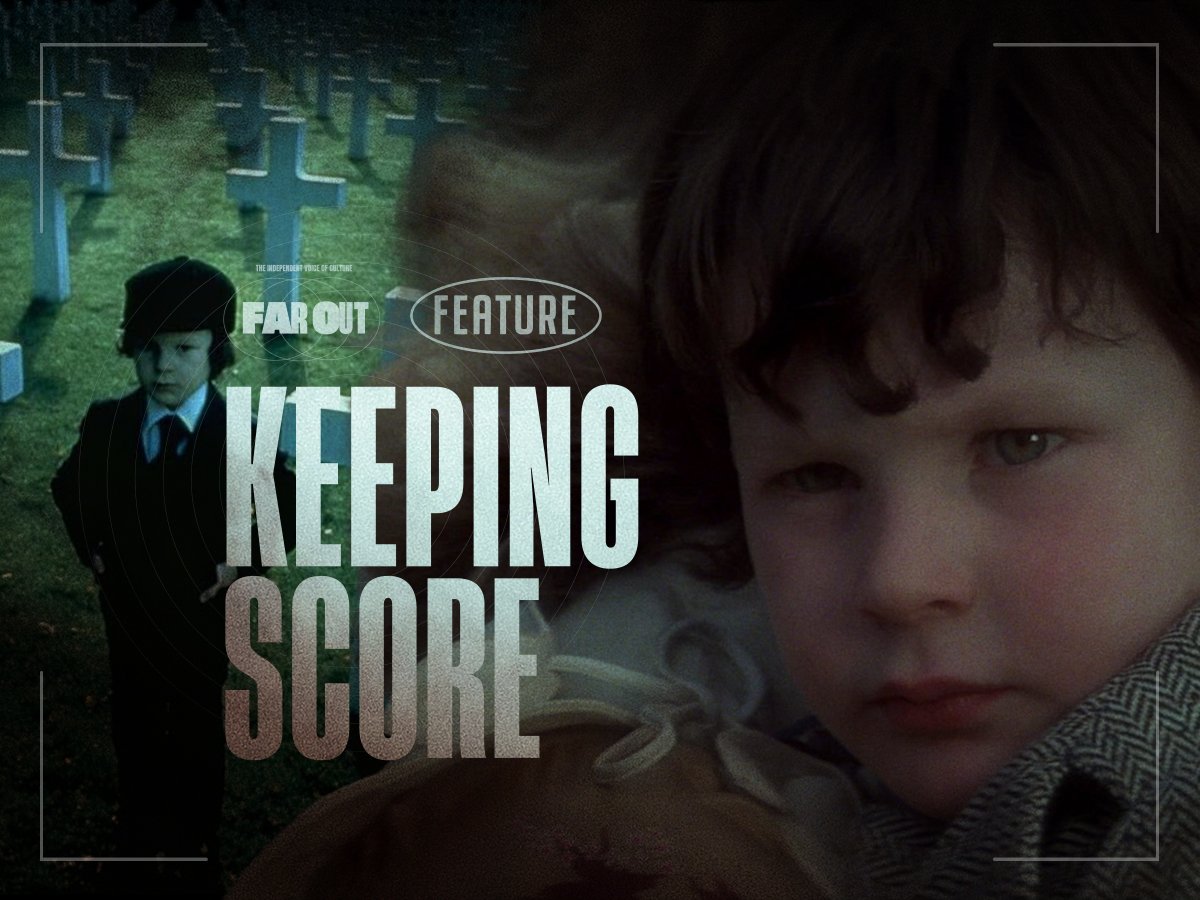
How ‘The Omen’ reinvented the horror more soundtrack

(Credits: Far Out / 20th Century Fox)
You could say that all children are the work of the devil, loud, needy, constantly running around the place causing mayhem, have no concept of current events or culture, and they don’t even pay tax, and one iconic horror movie took this idea to its logically extreme: Richard Donner’s demonic 1976 classic, The Omen.
This titan of terror is one of the definitive ‘scary kids’ films. It centres on young Damien Thorn, a role played by a then-five-year-old Harry Spencer Stevens, and unbeknownst to his parents, their darling boy is actually the literal Antichrist, a personification of pure evil who will one day bring about the end of days. Next time you feel bad about drawing on your parents’ walls as a kid, remember that things could have been a lot worse.
The themes of The Omen laid the perfect blueprints for its music, and the job of scoring this groundbreaking and somewhat cursed horror fell to one of the greatest composers of all time, Jerry Goldsmith. The movie didn’t have a lot of money, its budget was a paltry $2.8million, but producer Alan Ladd Jr was so keen to have him work on the project that he personally gave him $25,000 to help cover the costs. With this sort of backing, the pressure was on, and unfortunately, Goldsmith had no idea what to do.
Traditional musical techniques simply weren’t conveying the sort of emotion Goldsmith wanted. He worked alongside his wife, Carol, a talented lyricist and singer in her own right, but just couldn’t find anything that he liked. Then one day, in true horror movie fashion, he announced to Carol that he could ‘hear voices’. If traditional musical instruments couldn’t solve his problem, then perhaps he needed to turn to the oldest instrument in the world: the human voice.
As Damien was supposed to be the opposite of Jesus, the composer reckoned that his theme music needed to be the opposite of a Catholic mass. With the help of a seasoned choirmaster, Goldsmith devised a piece that was a subversion of the chant heard when conducting the Eucharist. This was “Ave Satani”, which was Latin for “Hail Satan”, well, sort of. It turns out that the choirmaster, who was supposed to be an ‘expert’ on the dead language, made a series of mistakes when translating into English; the actual phrase should have been “avē Satana”, as anyone who went to public school will tell you.
Luckily, most people don’t speak Latin, so these blunders went unnoticed, with people devouring the score, amazed at how simple choral chanting could be so damn terrifying. It revolutionised the way musicians approached horror, opening up a whole new world of options that are still being explored to this day. Goldsmith himself was rewarded with an Oscar for ‘Best Original Score’, the only victory he managed out of a whopping 18 nominations across his storied career.
It seems so simple looking back, but the idea of using religious music to soundtrack a horror film was unheard of in the mid-1970s. Goldsmith’s simple yet brilliant idea to flip the genre on its head changed it forever and gave generations of viewers beautifully soundtracked nightmares.
Related Topics



